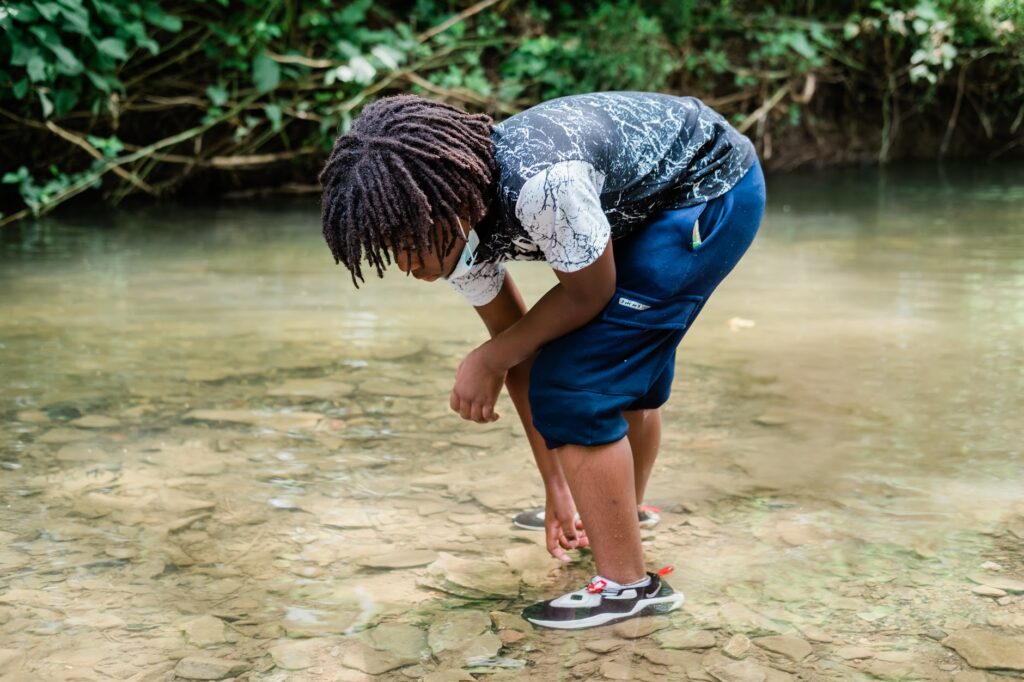Pittsburgh is home to an amazingly rich diversity of youth programs–arts, music, robotics, you name it. Together with schools and community centered places like libraries, museums, parks, and social service agencies, these are important parts of the learning and development (L&D) ecosystem of Pittsburgh.
Most people don’t think about learning in ecosystem terms. They think about individual learners or about schools. But ecosystem thinking brings great advantages, particularly for considering equity and justice.
Ecosystem thinking pushes us to think about how the people, places, and possibilities for learning come together to support the learning and development of individual youth and the development and learning happening within entire communities. Ecosystem thinking stresses that learning happens in all kinds of places, from homes to schools to afterschool programs, and that learning happens across our lifetimes. Moving our thinking to the level of systems–what is often called systems thinking–is essential for remedying the deep educational inequalities that persist for in-school and out-of-school learning because these inequities stem from systemic problems.
At this point in history–nearly two years into a seemingly never-ending pandemic that is the largest disturbance in the ecosystem we’ve seen–ecosystem thinking is more important than ever!
Recently, with several wonderful colleagues, we created a book on this topic: It Takes an Ecosystem: Understanding the People, Places, and Possibilities of Learning Across Settings. Our goal was to promote ecosystem thinking and consider how it might help address some of the biggest problems in education–particularly problems of inequity.
We framed this book around four powerful ideas and stuffed it with Pittsburgh authors and ideas with Pittsburgh roots.
First, the book is shaped through a lens of equity and justice. Chapters address the ways many of our existing systems sustain inequity and how ecosystem thinking allows us to consider these problems in new and powerful ways.
Second, we explore the ecosystem frame. Where a natural ecosystem is made up of plants, animals, water, and nutrients, an L&D ecosystem is full of people, places, and possibilities. It is a system without a center–a collection of elements that interact in all sorts of ways. Ecosystems are complex and dynamic. And they may be healthy or unhealthy. When we start to think about the health of the L&D ecosystem (rather than just the health of particular children, youth, or programs), this brings about a different conversation than usually happens–it’s a conversation about ecosystem management.
Third, we pose the question, what if we shaped our systems in ways that were consistent with what we know from developmental science? The Science of Learning and Development–or SoLD Alliance–is a group of researchers and leaders that have synthesized agreed-upon findings from developmental research. This science confirms that learning happens everywhere, that every child has great potential, and that positive relationships are fundamental for learning and development.
Finally, we ask readers to consider the unifying concept of the Allied Youth Fields–i.e., thinking of the many fields involved in a young person’s life as part of related efforts, including education, youth programs, child welfare, juvenile justice, police, even mental health, housing, and transportation.
We mentioned above that the book was rooted in Pittsburgh, right? Here are a few ways:
- Roderick L. Carey–who spent two years working with youth programs in Pittsburgh and is now at the University of Delaware–and colleagues, Camila Polanco and Horatio Blackman, ask us to imagine what it would mean for Black lives to truly matter in learning ecosystems.
- Lori Delale-O’Connor, a University of Pittsburgh researcher, discusses the important role of families in learning and development ecosystems.
- Junlei Li from Harvard and Dana Winters from the Fred Rogers Center build on ideas from Fred Rogers and describe the “power of simple ordinary interactions” in the ecosystem.
- Mac Howison from The Heinz Endowments, along with researchers Esohe Osai and Tom Akiva, discuss the roles of philanthropy, research, and evaluation in shaping ecosystems.
- A team of researchers from the School of Education at the University of Pittsburgh, including Remake Learning Co-Chair, Dean Valerie Kinloch, as well as Fatima Brunson, DaVonna Graham, and Tanja Burkhard, explore what leadership and organizing for equity can look like.
We hope that the ideas from this book will be used by youth development professionals, educators, and leaders to continue to strengthen the rich learning and development ecosystem that we have here in the Pittsburgh region. To read more, see: It Takes an Ecosystem: Understanding the People, Places, and Possibilities of Learning Across Settings.
